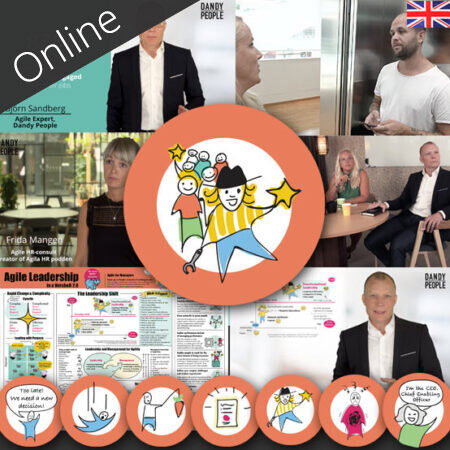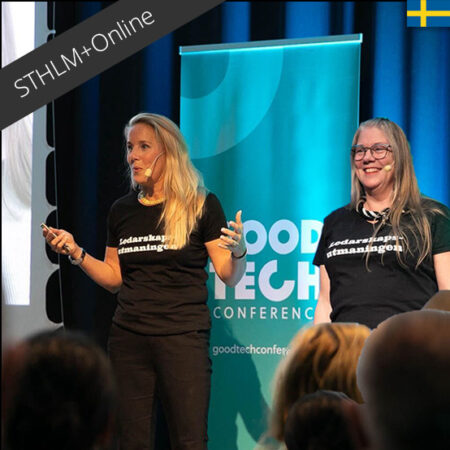We are exposed to an incredible number of impressions in one day. We are met by advertising on the way to work, pictures on instagrams and ads on facebook, emails about fantastic offers and news from all over the world. At work, we are often met by policies, attitudes, expectations of others and performance reviews. Not being able to sort in this and finding your own meaning and purpose can create stress, uncertainty and a feeling of being overwhelmed. The importance of being able to lead yourself, and others, to create a sustainable lifestyle has never been as big as now.
Your values and your why
I see the personal leadership as something that needs to grow when you find your own values and purpose. “Start with why” was founded by Simon Sinek, he says that organizations need to start by establishing why they exist before they can start talking about how and what they do. It is fully applicable to the personal leadership as well, you need to find your own “WHY” before you know what to do and how.
To find your own WHY, you first need to know your values. What is most important to me? You can do this by listening inwards, by turning off all impressions and expectations from the outside world. To ignore the template that society is trying to put us all into and listen to yourself. There is much talk about meditation and that it is the only way to listen inward, but I think that when you do something that you love, whether it is to meditate, yoga, paint, walk your dog, ride or run, it is your opportunity to hear your inner voice . The one who says what you really like and value. The key is to listen and above all to trust what that voice is saying. Trust yourself, that you know best what is right for you.
Based on your values, the why is easier to find. My WHY statement is:
“I empower myself and the people around me so we can become the best people that we can be”.
Exercise WHY statement
To write your WHY statement, follow these guidelines:
- Simple and clear
- Only one sentence
- Language you use yourself
- Work both at work and in private
- Write several until you find the right one
Safety and learning
To feel that your purpose is being fulfilled and developed, our sense of security and learning is important. The human instincts are the same today as they were in the stone-age and our brain is divided into three motivational systems. The model created by Paul Gilbert consists of the red threat system, the blue drive system and the green soothing system.

When the blue drive system is started, we learn new things and explore new opportunities, this is also where we find our driving force and look for rewards. Here is where we find our competence, physical activity, sexual contacts and performance. If we focus too much in this area, on the status and the material, things that we believe will lead to long-term happiness then can instead make us unhappy as we will never really feel satisfied. Activation of the blue system secretes dopamine, which makes us tired and places high demands on recovery.
The red threat system is activated when we focus on managing different types of threats. The pulse will increase and it becomes difficult to see and take in other people’s perspectives. Our empathy falls when we feel threatened, which also leads to reduced ability to cooperate, easier to get into conflict and we become more aggressive. When the threat system is activated, adrenaline and the stress hormone cortisol is released in the body. Feeling stress for a short period of time is completely natural and a survival mechanism, it is when we activate the system all the time and have a constant influence of these hormones that it will damages our system.
The green soothing system exists to protect us in the context of nursing, caring and attachment to others. It is activated when we feel that we belong, to a family, a team, an organization. And when we feel that we mean something to others and others care about us. When the soothing system is activated, planning, creativity, memory and concentration are improved. We get better at reflecting, seeing the perspective of others and making wiser decisions. Safe brains are simply smart brains. When the security system is activated, oxytocin is released, a soothing hormone that gives us a sense of fulfillment and care, for ourselves and others.
When we are aware of these systems, we can also identify what triggers the different systems. It is important to find the right conditions for being able to feel good and function in the long term.
Exercise: finding your stress signals
- Draw a figure of a whole body that represents yourself.
- What happens to your body and brain when you feel insecure?
- Illustrate in the figure you drawn with picture and words.
Purpose: To identify stressors in order to pay attention to when the threat system is activated.
Action and reflection
It is not enough to be grounded in your values, know why you want something and feel safe and satisfied. Without action, we do not move forward. To know what to focus on, we need a vision and goals. Vision is the more long-term, and goal is what can be measured and fulfilled. Within agile working methods, we work with priorities and breakdown of tasks to move forward in the right order and to show progress for every step we take.
The priority is important because we cannot look into the future. We must therefore work with what is most important first. We do not know how the conditions will change the only thing we know for sure is that they will change. You get sick, a relative becomes ill, cuts are made at the company, new climate reports are published etc. We work with what is important to us right now, based on what we know, right now.
Creating a common view of goals and vision in order to be able to make the right priorities is important and really no more directives are needed. This is also applicable to the personal leadership where you can simply share your goals with your surroundings and they will support you along the way. Because if no one knows about your goals, how can they help you?
Exercise 5 WHYs
- Think of a goal you have in life and write it down.
- Then ask someone else to ask you five times, kindly, why then?
- Why do you want a horse? Because I like horses.
- Why do you like horses? I like to ride.
- Why do you like to ride? Because I think it’s fun.
- Why do you think it’s fun to ride? Because I feel good when i do it.
- Why do you feel good about it? Because I feel free.
The purpose of the exercise is to find what feeling you ultimately want to achieve with your goals and achievements. It is almost always a feeling and not a thing.
Once you know what your goals are, break them down to action points. Tasks you can perform to move closer to the target. It will be easier to understand what effort is needed to achieve the goal if you see what parts need to be done to get there.
Another important tool from the agile world is visualization. The visualization helps with several things. You get an overview of the progress, but research also shows that visualization starts a process in the brain to interpret what we see and draw conclusions about how we should act or react, which creates effects that bridge barriers, simplifies and clarifies. Together this will increase the power for action.
When you have completed a task and move it to “DONE” then the reward system, the blue system, is activated and dopamine is released. Which feels good. It is important to get a little sense of it, perhaps daily, to feel that you are moving forward towards your goal. But remember it is not the dopamine that will make you feel satisfied, thats why it is so important to always remember WHY we are doing something. Thats when you get the oxytocin.
Having measurable goals also gives room for reflection on what you have done that moved you closer to your goal and what you have done that may not have had any effect. A reflection can be done daily, weekly and should include both reflection on WHAT has been done but also HOW it is performed.
A high performing individual knows why they do something and constantly reflect on what they are doing and how it is performing. This quote have been with me a while and tells me why it is important to also reflect on what and how we do something.
”If you do the same thing every day, the same way without questioning why you do it and how you do it, then you are a robot.
If you ask what you do and how you do it and constantly improve, you are a thinking person.”
John Eklund. Production manager JM, winner of construction industry Leanprice 2011.
Exercise self reflection
- Think of the day so far.
- Write down 3 things you did well today
- Write down one thing you could do differently
The purpose of the exercise is to pay attention to everything you do that is good and create compassion for yourself and also to put your finger on something that you could have done differently and improve it for the next day.
Trust your WHY
Values are our inner compass, they together with your WHY will guide you in all the choices you make. Trust your gut feeling and listen to your body and inner voice. Even small steps are steps, show yourself that you are moving forward, have fun and learn on the way. Be nice to yourself! With the guidance of the above, you will make a difference to yourself, and as a leader you can help others find their why.
Isabelle Svärd, Enterprise Agile Coach
Did you like this post? Read more on Retrospective
>> Speedboat retro with a distributed team
>> Speedboat Retrospective – Free Download of Poster
Follow us on LinkedIn for our updates >



